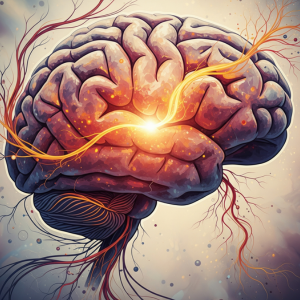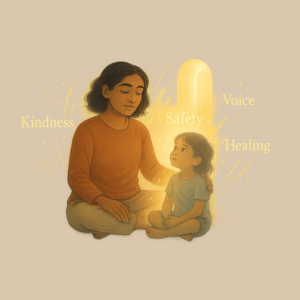
What If Your Brain Isn’t Broken, Just Holding Onto an Old Story?
Here’s something we rarely hear in emotional health spaces—your brain actually wants to heal. It isn’t working against you. It’s just holding on to stories it thought were true at the time. And if no one ever told it otherwise? It never updates them.
That’s where memory reconsolidation steps in—a brain function that lets you emotionally rewrite old trauma instead of just managing symptoms.
This might sound technical, but stay with me—it’s surprisingly human. And it’s one of the deepest tools we use in our trauma healing and NLP-based coaching programs at ashishnagarnlp.com.
What Is Memory Reconsolidation?
Let’s break it down. When you recall a strong memory—especially one charged with emotion—your brain doesn’t just “play it back.”
It temporarily opens it up for editing. But here’s the catch: if the conditions feel safe enough, and you experience something unexpected, your brain might just update the emotional meaning of that memory before storing it again.
This is called memory reconsolidation, and it’s been researched and refined by experts like Bruce Ecker in therapies such as Coherence Therapy.
Think of it like this:
Your brain goes: “Wait… something doesn’t add up. Maybe this fear isn’t true anymore.”
And boom—it rewrites the emotional tone.
No hypnosis. No mind tricks. Just your nervous system finally feeling safe enough to let go.
Rhea’s Story: A Real-Life Shift Through Subconscious Healing
Let me share something from my practice. Rhea (name changed) came to me after struggling with panic attacks for over a decade. On the surface, things looked okay. Good job, decent relationships, emotionally aware.
But the panic was random, intense, and out of sync with her life.
During a subconscious rewiring session through our program at ashishnagarnlp.com/courses, we discovered a long-buried memory:

She had been accidentally locked in a room as a child. No one came for what felt like hours. That terror got locked into her system. And her adult body kept replaying that terror in unrelated situations—traffic, elevators, even movie halls.
The turning point came not when she “remembered” the event—but when she experienced it again with a new emotional lens. She imagined her adult self comforting her younger self. She visualized being rescued, reassured, and safe.
That mismatch—being seen when she once felt abandoned—was enough to signal her brain: “This fear isn’t needed anymore.”
So… How Exactly Does This Work?
Memory reconsolidation usually unfolds in three parts:
Memory Activation
We don’t force traumatic recall. We gently bring up the emotional imprint—often through sensations, triggers, or inner child cues.
Mismatch Experience
This is where healing happens. You give your brain an emotional experience that contradicts the original pain:
- A kind voice
- A comforting presence
- A new belief: “I’m okay now.
Emotional Update
When the new emotional truth replaces the old, the brain reconsolidates the memory with less charge—sometimes none at all.
Inner Child Healing & Memory Reconsolidation: The Perfect Pair
In our EmpowerShift Self-Healing Cascade, one of the core phases is Inner Child Integration. Why?
Because the emotional brain stores core beliefs—like “I’m unlovable” or “I’m not safe”—usually before age 7. These aren’t logical. They’re felt truths burned into the nervous system.
Memory reconsolidation allows you to revisit those younger parts and offer what they never got:
- Reassurance
- Presence
- Permission to exist and feel
This is not about “fixing your past.”
It’s about offering your body a new truth.
How This Differs From Coping or Talk Therapy
Most therapies focus on:
- Managing the emotion
- Reframing the thought
- Building emotional intelligence
Memory reconsolidation focuses on:
- Felt safety
- Direct emotional mismatch
- Long-term resolution
It’s more about creating space for your emotional system to unlearn what it thought was true.

Real Transformations, Real Results

Can You Try This Without a Therapist?

Simple Memory Update Exercise
- Think of a recurring emotional trigger (panic, shame, anger).
- Ask: When was the first time I felt this way?
- Let the earliest memory rise up—don’t force it.
- Ask that version of you: What did you need then?
- Now imagine giving it—kindness, voice, safety.
- Sit with it. Let your breath slow. Let your body soften.
Why This Approach Is Growing in India
At www.ashishnagarnlp.com, more than 70% of our clients come with one of these issues:
- Emotional numbness
- Overreaction to small stressors
- “Functional but unhappy” life
- Childhood trauma they didn’t even recognize
And once they learn how to work with their subconscious mind, they stop seeing themselves as “damaged.”
They start trusting that their brain is actually pretty smart—it just needs a little help letting go.
Need Physiotherapy Help? Reach Out to Us
Healing Doesn’t Mean “Forgetting.” It Means Updating the Script.
That 5-year-old who felt scared, or the teen who felt humiliated, or the young adult who felt unwanted—they’re still inside you.
But they don’t have to run the show anymore.
Memory reconsolidation is how you gently shift emotional control back to the present—where your needs are heard, your feelings matter, and your body feels safe.
